Menu
You can manage your membership and billing method by clicking here
Terms of Service
Privacy Policy
Copyright © 2025 Office of Immigration Australia, a private company registered in Australia. All Rights Reserved.

Checking membership status...
 EXCLUSIVE MEMBERS ONLY ACCESS
EXCLUSIVE MEMBERS ONLY ACCESSTo access this month’s edition & Member’s only resources, enter your registered email address.



Exclusive Australian Immigration News, Updates & Opportunities
May 2025
This bulletin is for members only, and provides our members with month to month updates on Australian immigration policy changes and consequential opportunities. Opportunities are found via federal and state government policy shifts for the demand and supply for certain occupations.
This bulletin will keep you up to date so that you do not have to employ expensive immigration lawyers to provide you with monthly research.
May 2025 is here, and in this May edition of The Australian Immigration Bulletin, exciting opportunities and important updates are reshaping Australia’s immigration landscape!!!
In this month’s Federal News: Leading Australian tech companies advocate for increased immigration and more flexible relocation policies to boost national wealth and innovation!
At the same time, regional migration is experiencing significant growth, with Greater Bendigo emerging as Victoria’s most popular destination, seeing a remarkable 65% increase in internal migration.
Amid these migration trends, it’s important for migrants to be aware that Australian permanent residency and citizenship, while highly valued, can still be revoked under certain conditions. In this month’s news we discuss what these conditions entail.
Also in this month’s federal news we reflect on historical migration, we revisit Australia’s iconic Ten Pound Pom scheme, exploring the motivations and experiences of British migrants who embarked on a new life down under for just ten pounds!
In This Month’s State News: Skilled workers residing offshore remain eligible to be considered for State and Territory nominations! Please view the State Migration Section of this month’s bulletin for all State and Territory program updates and opportunities available!
In this month’s Economic News: Queensland urgently needs 50,000 additional workers to support its housing projects, offering lucrative salaries potentially exceeding six figures!
Meanwhile, entry-level mining positions, like FIFO drilling jobs, are gaining popularity for their attractive pay of around $100,000 annually without extensive qualifications!
Also in this month’s economic news, we discuss why thousands gather each morning at popular Sydney beaches, highlighting a growing cultural phenomenon as residents embrace sunrise rituals.
In this month’s Student News: Australia has witnessed a record surge in international student arrivals, with 197,000 students entering the country in February, surpassing pre-pandemic levels.
At the same time, the demand for freelance jobs among students studying abroad has risen dramatically, driven by their need for flexible, well-paid online employment opportunities to support their overseas education. In this month’s student news we will explain what freelancing is, how to get started and give the top 10 freelance work from home jobs for students!
All this and much more in the May issue of The Australian Immigration Bulletin! Let’s take a deeper look at what has happened so far and what is planned for the remainder of May 2025 in Australian Immigration, so that you can start planning!
All members now have FREE access to an online IELTS English Platform and course to practice, study and improve their English and IELTS score. The IELTS exam is one of the key recommended exams you will need to take in order to Apply for Skilled Migration to Australia and the better your results, the higher points you will get when submitting an expression of interest. The advanced English and IELTS platform will allow all members to practice Mock IELTS Exams, learn cutting edge tips and gain a greater understanding of how to achieve a Band 7+.
All members also have access to “ImmiConnect” which is now available in the member’s area. ImmiConnect is the Office of Immigration Australia’s Employer Sponsored program which allows overseas workers to receive job interview invitations from Australian employers, when job opportunities come available.
The program aims to bring globally mobile, highly-skilled and specialised individuals to Australia who can fill critical areas of need.
ImmiConnect is exclusive to active Australian Immigration Bulletin Members only. You must be a current Australian Immigration Bulletin Member to be eligible to receive job interview invitations.
So if you are interested in receiving these invitations, please sign up for FREE by Clicking “ImmiConnect” and adding your name and email address.

*2 WINNERS DRAWN EVERY MONTH:
Current Round: January 2025 – May 2025 (10 Winners/Prizes in total)
Next Round: June 2025 – October 2025 (10 Winners/Prizes in total)
There is always a winner, and the next one could be you!
The winners of the May 2025 Immigration Prize Giveaway were drawn at 10am AEST on 1st May 2025.
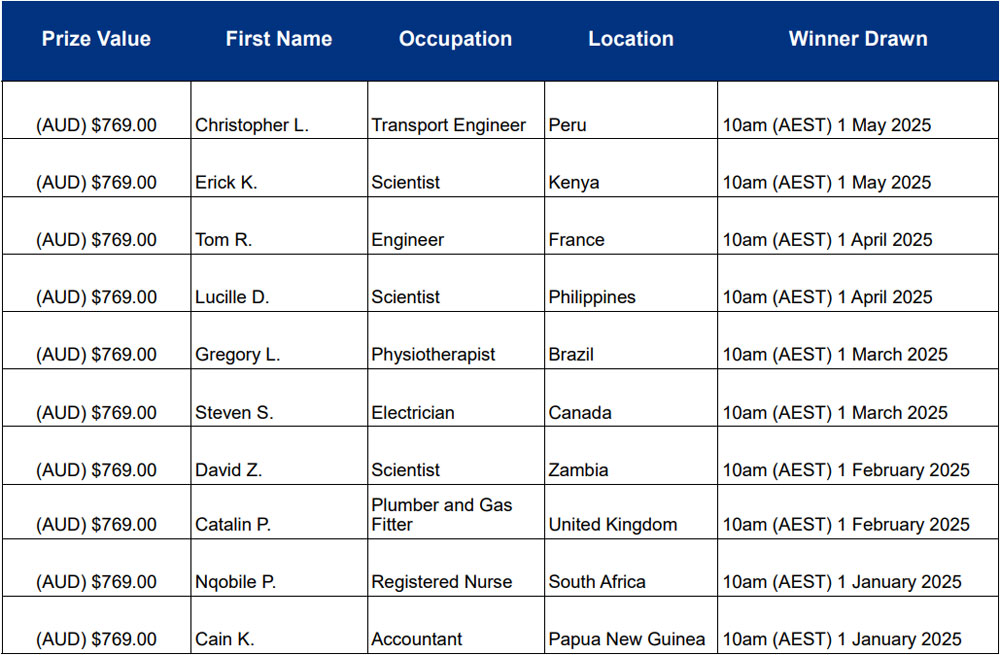
Congratulations to the May 2025 winners! You have been sent a confirmation email with details on how to claim your prize!
The next 2 lucky winners will be drawn at 10am AEST on 1st June 2025.
This Bulletin and its contents is for general information purposes only and should not be used as a substitute for consultation with professional advisors.
As legislation and travel requirements are constantly changing, we strongly recommend obtaining advice on your individual situation from a Registered Migration Agent.
Please click here to book a consultation with one of our Registered Australian Migration Agents, located in Australia.
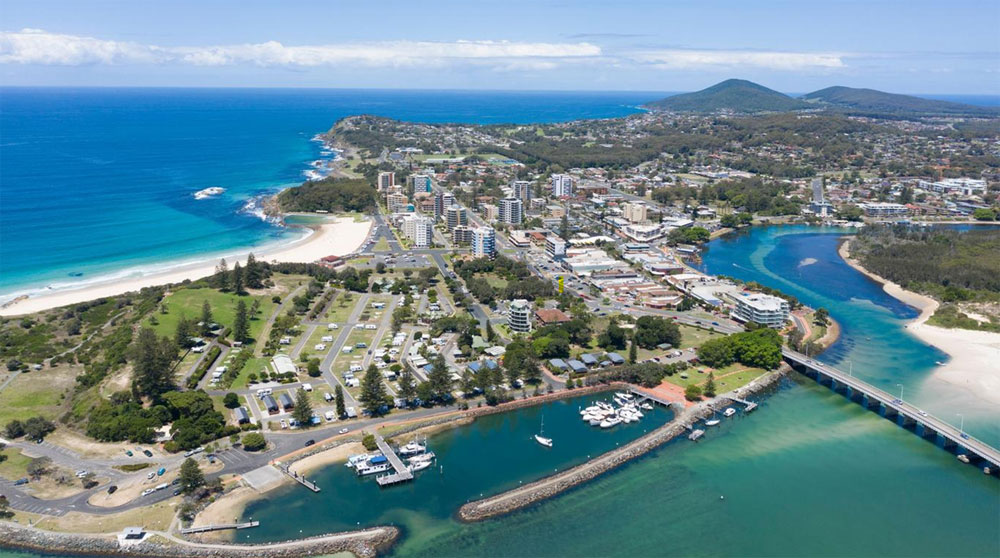
Forster, New South Wales
The Results of the August 2021 census were made public on 12th July 2022, and revealed that Australia has become a majority migrant nation, as the census data shows for the first time that more than 50 per cent of residents were born overseas or have an immigrant parent. Last year’s census counted nearly 25.5 million people, including 1 million new residents.
Australia’s 2025 Migration Program has been carefully designed to boost the social and economic outcomes that meet Australia’s needs. In fact, the migration programme was first launched in 1945 following the aftermath of World War 2. Given this long history, it is worth understanding how it works. The Australian Immigration Bulletin exists to help explain this in more detail.
As we’ve entered the 5th month of the year, join us for a look at the latest news and developments in the world of Australian Immigration!

We spoke with Jessica, a skilled migrant working in her own business as a Marketing Specialist.
In which professions have you found employment within Australia?
Hospitality
Marketing
What were some of the biggest challenges after moving to Australia?
Not being able to express myself and understand other people clearly due to my low-level of English skills.
What do you wish you had known before the application process and interview?
This is much simpler than people talk about. There are no “monsters” in the interviews and we don’t need to be afraid of failing. The most important thing is to be yourself, and try not to fit into someone else’s shoes.
What advice would you give to others moving to Australia?
Don’t procrastinate on the job search and application. We used to tell ourselves: “I am not ready yet” or “I need to prepare a little bit more before applying” or “They will never accept my application; I won’t waste my time”. But the truth is that we will never be 100% ready. My advice is:
Start now.
Start where you are.
Start with pain.
Start with doubt.
Start with hands shaking.
Start with voice trembling. But start!
Start and don’t stop.
Start where you are, with what you have. Just start.

Two of Australia’s biggest tech companies are calling for more immigrants and more welcoming policies to make it easier for foreigners to relocate down under to help make the nation smarter and richer.
One of Australia’s newest billionaires, AirTrunk founder Robin Khuda – who originally moved to Australia in 1997 from Bangladesh to study accounting at Sydney’s UTS – said Australia was lagging behind other nations when it came to harnessing immigration to create wealth.
“I’m a strong believer that having more diversity, more immigrants, more international students in a country … creates much better dynamics. If you look at for example, in the US at the Fortune 500 companies, 46 per cent of those companies were founded by either immigrants or the children of immigrants, which is huge. Between those companies, they’re creating a lot of wealth, a lot of jobs.”
After studying at UTS, Mr Khuda quickly moved into telecommunications, working at Optus, and then into technology.
He later became general manager at Fujitsu Australia and New Zealand, then chief financial officer at Pipe Networks, a start-up helmed by Bevan Slattery who later founded ASX-listed data centre operator NextDC.
But he scored his big break in 2015, when he founded AirTrunk – a data centre group he built from scratch (and almost collapsed) – before selling it to Macquarie, then US private equity behemoth Blackstone for $24bn last September, capping off one of the year’s biggest corporate deals.
He hopes his story will inspire more immigrants to have a crack at entrepreneurialism and make it big in Australia and beyond.
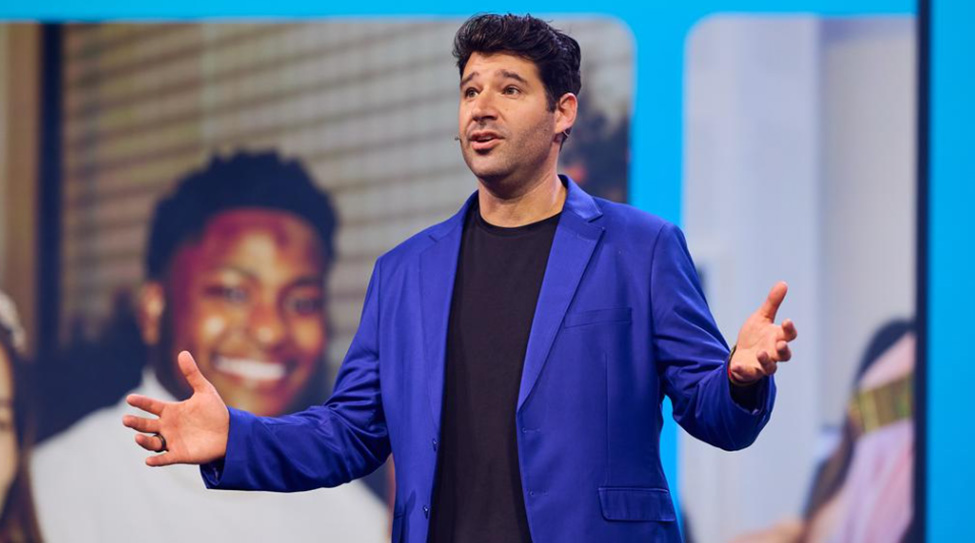
Cliff Obrecht – co-founder of Canva, which is now worth $US32bn ($AU51.16bn) – said Australia should be more welcoming of immigrants to help meet a projected shortfall of about 650,000 industry workers that will be needed by the end of the decade.
“We’ve got Canva and Atlassian and a couple of other historic companies like Seek, but like at our scale – 200-plus million monthly active users, it’s a whole new set of technology problems, marketing growth problems that most companies in Australia just haven’t had to face, which means we don’t have that very senior talent pool,” Mr Obrecht said.
“So if we can make it incredibly attractive to bring those people to Australia. And when I say we need to make it attractive, we need to make it easy for them to come to Australia and be sponsored.
“From a taxation perspective, we need to make it attractive for them and to leave a highly paid USD based salary to come to Australia. So like, it’s a holistic ecosystem, and if we can make it attractive for senior staff to come over there, they’re the ones that are going to teach the next generation of Australian founders, and the more successful we can breed here, the better.”
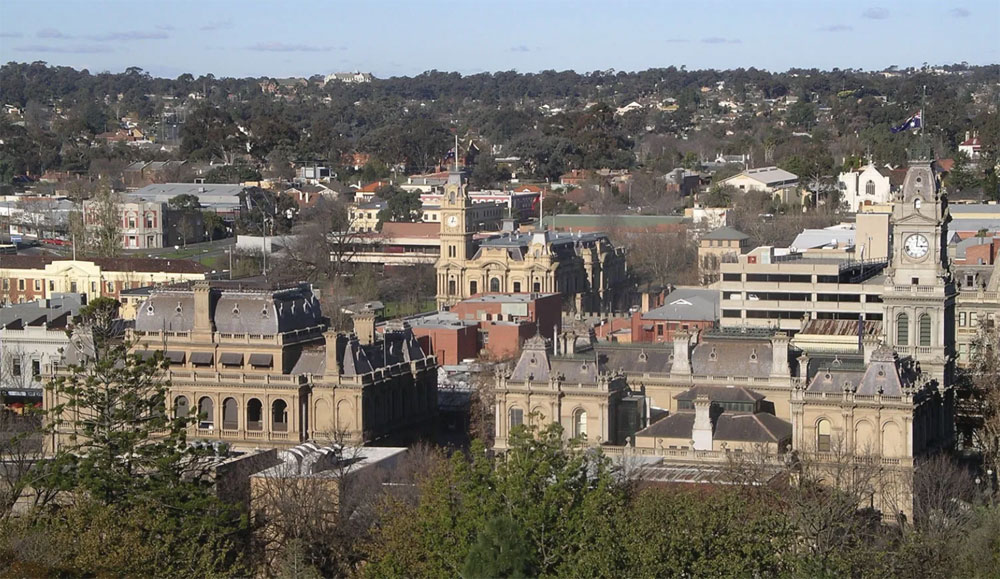
The regional Victorian city of Greater Bendigo has emerged as a top destination for internal migration in Australia, according to new data released by CommBank and the Regional Australia Institute (RAI).
The latest Regional Movers Index (RMI) revealed that Greater Bendigo recorded a 65% annual growth in net internal migration from 2023 to 2024, making it the most popular local government area (LGA) for regional movers in Victoria.
Bendigo tops regional migration list
Greater Bendigo’s appeal is rooted in its vibrant arts and cultural scene, natural beauty, and well-established education and health infrastructure. While traditionally a favourite among regional movers, the city has seen a surge in appeal for city-based Australians seeking a tree change.
In the December quarter, Bendigo recorded the highest growth among capital-to-regional movers (63.2%), and second highest nationally for capital-regional migration, with a staggering 278.7% annual growth.
To accommodate ongoing and future growth, the City of Greater Bendigo has adopted a long-term managed growth strategy to guide residential development through to 2056. The strategy outlines plans for approximately 38,000 new dwellings—primarily in well-serviced urban areas—with key growth zones identified in Marong, Huntly, Maiden Gully, and Strathfieldsaye.
Big business engages locals to uncover opportunities
The release of the RMI data coincided with CommBank’s business banking leadership visiting Bendigo, where they met with local businesses and community leaders to discuss growth potential and regional challenges.
“In recent years, Bendigo and the surrounding region have experienced a population gold rush which is only expected to grow due to the area’s rich cultural history, scenic landscape and diverse economy,” said Mike Vacy-Lyle, CommBank group executive for business banking.
“Its close proximity to Melbourne also appeals to those seeking the convenience of city living and country charm, without compromising on quality services, job opportunities or housing affordability.”
Local economy strengthens across multiple sectors
Vacy-Lyle highlighted the economic momentum building in the region despite the rising cost of doing business in regional areas.
“We are seeing strong gains across several sectors including health, manufacturing, professional services, transport and agriculture, with Greater Bendigo uniquely positioned to capitalise on this continued population boom,” he said.
“With the right investments channelled into the right areas, Bendigo is well positioned to support the state’s economic growth.”
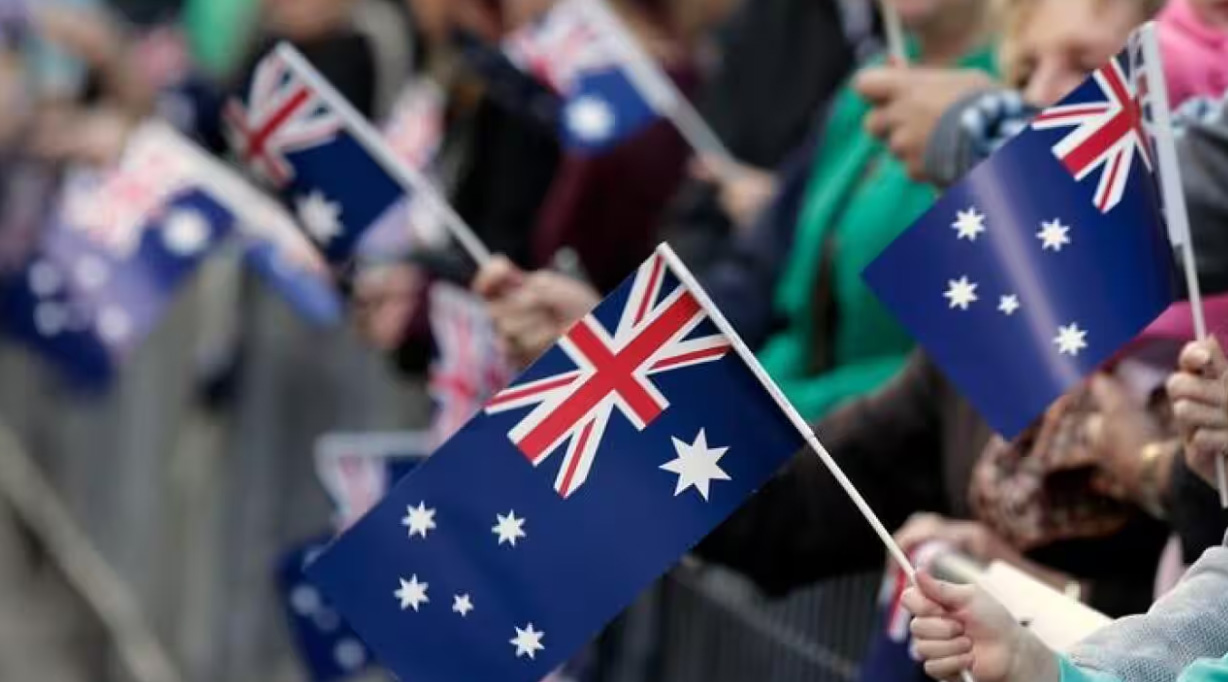
Gaining permanent residency (PR) or Australian citizenship is a major milestone for many migrants. It offers security, rights, and opportunities—but did you know that these privileges can sometimes be revoked? Here are some circumstances under which the Australian government can revoke PR status or citizenship.
Key Points

More than 200,000 Brits emigrated to Australia under the famous the Ten Pound Scheme, an Australian government initiative that allowed them to settle in the land down under for just ten pounds. It was an opportunity for a fresh start, a new life, and a future in a promising, vibrant country.
But who were the people that migrated and what lay in store for them?
Who were the real Ten Pound Poms?
The ‘Ten Pound Poms’ were ordinary British subjects who took up the Australian government’s Assisted Passage Migration Scheme set up in 1945. Many came from the north of England and Wales, from mining communities and factory towns.
They were not just from Britain; anyone who was born in Ireland, or were British subjects from Malta or Cyprus, for instance, were eligible. And the scheme operated in other European countries such as Germany and the Netherlands.
The £10, or equivalent in other currencies, covered processing fees for anyone who was prepared to up sticks and move to the southern hemisphere.
Running alongside it was the Big Brother Movement that brought youths from Britain to work on farms in the Outback. The title came from the fact that each ‘little brother’ from overseas was paired up with an Australian ‘big brother’ to teach him the ropes.
Why was the assisted passage scheme set up?
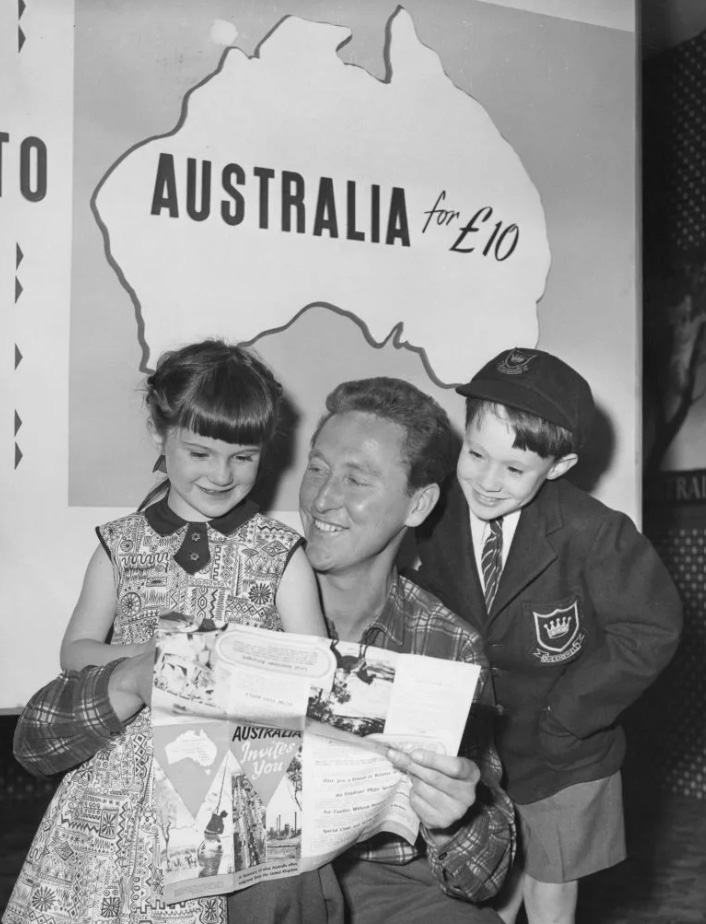
Australia’s economy in the late 1940s was growing but it lacked manpower to serve its booming industries. The aim of the scheme was to greatly enlarge the small 10 million population with skilled workers and child-bearing aged women. The slogan at the time was “populate or perish”.
How long did the assistance last?
The £10 fee (£500 in today’s terms) rose through the years but the scheme and various other initiatives such as Bring Out A Briton in the late 1950s, lasted until 1982, by which time the cost was £75 (£1,160 today).
Why was it attractive to Britons?
Post-war Britain was still subject to rationing and suffering from a flood of working age men being demobbed from the services. In the 50s, 60s and 70s coal mines were closing all over Britain and manufacturing was moving abroad. So there was a lack of decent choice of job opportunities and people saw a move to Australia as a way of building a better life for themselves and their families.
This push to find prosperity and happiness was enhanced by the Australian migration publicity that promised good employment prospects, attractive, affordable housing, the prospect of buying a car, great weather and a relaxed lifestyle.
What was the deal?
Skilled working class men and their families, and single young women, got their trip to Australia for just £10 per person at a time when the actual fare was about £120 (£6,000 today). Their children travelled for free. Anyone who took up the offer had to agree to remain in the country a minimum of two years, otherwise they were obliged to compensate the government by paying what would have been the full fare.
How many people took up the Australian offer?
In the two years between 1947 and 1949, some 210,000 Britons left for Australia. In 1956, the Australian government set its London Migration Office a target of processing 25,000 British emigrants that year, which it more than met. The offer was so enticing, in all more than a million people made the trip Down Under between 1945 and 1972.
Did Australians welcome the ‘Ten Pound Poms’ with open arms?
The free and easy attitude of the Australians was difficult to get used to, but they were mostly generous to the Poms. Frictions arose more between the Brits and other immigrants, especially the Germans in the early days because the war was still fresh in everyone’s memory.
For some it worked out very well. They did get an opportunity to buy land and build their own home – a relatively rare thing in Britain. And other families in the same situation pitched in and they helped each other to get established. If they were prepared to adapt and adopt the Australian way, they generally got on OK.
Did the Poms settle easily, or did they miss home?
Many struggled with the climate in the days before airconditioning. They found the heat oppressive in summer and missed the traditional cold and snow for Christmas, if not the rain. They found the cost of living higher than at home but, if they did manage to secure a long-term job, wages were also mainly higher and taxes lower.
That didn’t stop the homesickness, though, and nostalgia for things they had grown up with. Catherine Cole, the daughter of two Ten Pound Poms, who has written the book Slipstream about her family’s experiences, recalled what kept them in touch with their old lives. “My parents were homesick. My father loved to sing, especially old fashioned and sad songs like I’ll Take You Home Again Kathleen and Danny Boy so these acted as a vehicle for his nostalgia and sense of loss.
“Our family outings and celebrations were full of Northern dialect and sayings. We got parcels from England with Pomfret cakes and rock and parkin and Beano and The Dalesmanand the Barnsley Chronicle.”
What percentage of Ten Pound Poms returned to the UK?
Many of the Ten Pound Poms stayed in Australia, but over the years around a quarter returned. The reality of coming back home, however, did not always lead to a successful reintegration, and a half of that quarter became what was termed ‘Boomerang Poms’ who ended up back in Australia.
Have there been any famous Ten Pound Poms?
The Prime Minister of Australia from 2010 to 2013, Julia Gillard, was a four-year-old when her parents took up assisted passage from Wales. The Prime Minister who followed her into office in 2013, Tony Abbott, migrated to the country in 1960 under the scheme.
In the entertainment field, the Gibbs brothers, who became the Bee Gees, were taken to Australia as children and began their musical careers there, as did three on the members of rock band AC/DC. Singer Kylie Minogue was born to a Ten Pound Pom mother, and actor Hugh Jackman was the son of two assisted migrants. England cricket fast bowlers, Harold Larwood and Frank Tyson, took advantage of the scheme when they retired from the game, the former in 1950 and the latter ten years later.
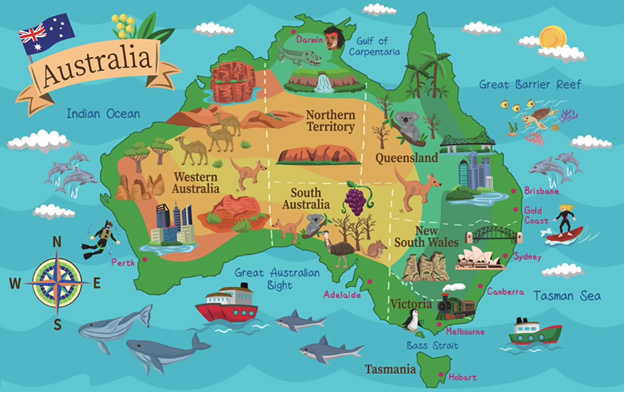
If you are interested in applying for a general skilled migration visa to Australia, it is important to have a good understanding of the skilled visa options and how the migration points test works, so that you can maximise your chances of being eligible to apply for a skilled visa.
A general skilled migration visa is an option available to skilled workers who are seeking to qualify for a skilled visa independently, or under a state or family sponsorship. It is an alternative to an employer sponsored visa.
One of the key criteria to qualify for a general skilled migration visa is the points test (a criterion that does not apply to employer sponsored visas). This is often the most challenging aspect for prospective skilled visa applicants to overcome when seeking an invitation to apply for the relevant skilled visa.
If you are considering applying for a general skilled migration program visa, an important concept to understand is the Expression Of Interest (EOI).
If you are considering applying for a general skilled migration visa, it is important to be aware that for certain visas in this visa class, you will first be required to lodge an EOI with the Department of Home Affairs (the Department) through SkillSelect. The EOI is not a visa application, but rather, it is the process by which you can express your interest in applying for the relevant skilled visa (It’s important to note, that there is NO fee to submit an EOI).
This requirement applies to the following skilled visa subclasses:
Let’s take a brief look at each of these visas below:
The ‘subclass 189’ is a federal sponsored visa that grants automatic permanent residence in Australia. It is subject to nil visa conditions or obligations. For this reason, it is often considered to be the most flexible of the skilled visa options available.
A subclass 189 points-based visa allows you to live and work in any state or territory permanently.
The ‘subclass 190’ is a state/ territory sponsored permanent residence visa. It is another points-based visa for which invitations are issued throughout each month by individual states and territories. One of the benefits of applying for state nomination is that you will be granted an additional 5 points.
An important aspect to consider, which does not apply to the subclass 189 visa is that there is an added step in the application process. In this case, you must also apply for nomination approval to a state or territory government. Only upon receipt of an invitation from the relevant state or territory to which you apply can you then apply to the Department for the visa itself.
Your obligations as a subclass 190 visa holder are that you must commit to your nominating jurisdiction’s obligations and commit to residing in your nominating State or Territory for two years from visa grant.
The ‘subclass 491’ is also a points-based state/ territory (or family) sponsored visa. It is a regional visa with a term of five years. The Department issues invitations for family sponsored EOI applications only (in invitation rounds). Invitations for state sponsorship are issued by individual states and territories throughout each month. This will grant you an additional 15 points for the nomination.
Being a provisional visa, this means it provides a pathway to permanent residence in Australia with the Subclass 191 Permanent Residence (Skilled Regional) visa, subject to meeting specified requirements.
Be mindful that as a subclass 491 visa holder, you must abide by visa condition 8579, which requires you to live, work and study in a designated regional area of Australia. For migration purposes, most locations of Australia outside of major cities (Sydney, Melbourne, Brisbane, Perth, etc.) are classed as regional areas.
If your EOI is successful, you will receive an invitation to apply for the visa, as specified in the invitation letter. This then enables you to proceed with lodgement of your visa application (provided you meet all other visa lodgement and visa grant requirements).
Please note, the below State and Territory program updates is a general overview only. It does not take into account any of your personal circumstances. You must check the State/Territory information carefully to ensure you can meet all the requirements for nomination.
Australia is currently facing a shortage of skilled migrants to fill workforce demands. In response, states and territories have been easing the conditions of their visa programs to help attract skilled workers from overseas.
Below is the monthly update for some of the State and Territory opportunities available.
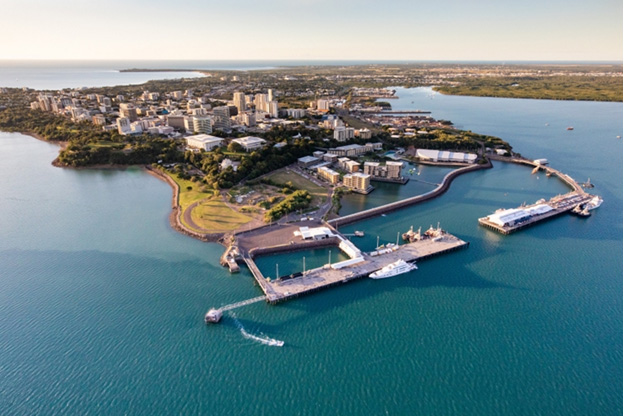
Program Status Update
UPDATE: Northern Territory General Skilled Migration (GSM) nomination applications for 2024-25
Northern Territory has now received sufficient nomination applications to fill the total allocations for the 2024-25 program year. To manage the large number of applications received against the limited allocation of nominations given to the Northern Territory we have suspended our online portal for new applications. All applications received before the suspension will continue to be assessed, and those who meet the eligibility criteria will be issued nominations.
The program will be reopened for new applications once nomination allocations are received for the 2025-26 program year (The program year generally runs from Start of July 2025 – End of June 2026).
During the suspension, applications will continue to be accepted by exception for onshore applicants who have certain visa deadlines before 1 July 2025. For more information on this, please view the update on NT GSM nomination applications for 2024-25 page.
Once the above mentioned temporary suspension is lifted, you may be able to proceed with the NT’s usual skilled migration program. Program details below:
People residing offshore are eligible to be considered for Northern Territory (NT) nomination. Invitations to apply for Northern Territory nomination will be via the ranking system.
The ‘Northern Territory Offshore Migration Occupation List’ identifies the occupations in current demand in the Northern Territory. This List is important if you want to apply for Northern Territory nomination for either a:
The ‘Northern Territory Offshore Migration Occupation List’ is only applicable for those applying for NT nomination from outside Australia, under the Priority Occupation stream.
Please note: The Northern Territory government has advised that offshore applicants will generally only be offered a Northern Territory nomination for a subclass 491 visa. Subclass 190 nominations will only be offered in exceptional circumstances, such as cases where the applicant has strong connections to the NT.
The NT advises eligible applicants to apply as soon as they meet the eligibility criteria. To receive a nomination from the NT Government, you must:
Before submitting an EOI for The Northern Territory, applicants should check that they meet all eligibility requirements.
For a further explanation, see the Frequently Asked Questions page on the Northern Territory Government website.
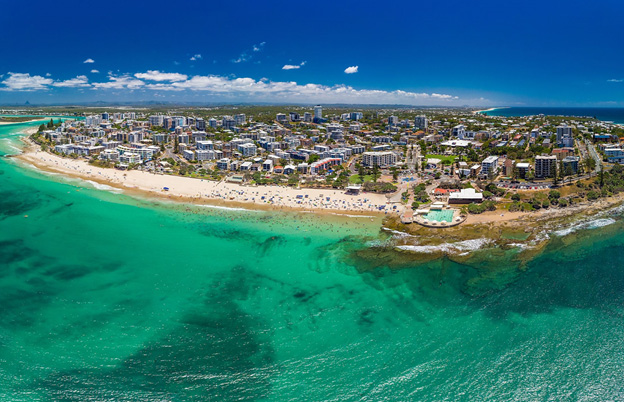
Program Status Update
Depending on your occupation and situation, there are two state nomination options available for skilled migrants through Queensland.
For Queensland state nomination, prospective applicants must meet the Department of Home Affairs requirements, state-specific occupation requirements and have skills in an occupation that is available on the Queensland Skilled Occupation List.
You may undertake employment once onshore in Queensland through:
Offshore applicants meeting the minimum published requirements are eligible to lodge an Expression of Interest (EOI) on SkillSelect and then a Registration of Interest (ROI) on the Migration Queensland portal.
Migration Queensland has opened the 2024-25 State Nominated Migration Program. For more information, please see here.
NOTE: To be eligible for Queensland’s 2024-25 program, your EOI must be submitted on or after 13 September 2024.
Migration Queensland criteria requires you to:
The 2024-25 Skilled Migration Program is open to both onshore and offshore applicants and provides pathways for skilled workers, graduates, and small business owners.
Before submitting a Registration of Interest (ROI) for Queensland, applicants should check that they meet all eligibility requirements.
Note: In the EOI, select ‘Queensland’ as the only state of interest in the EOI, if you wish to be considered for an invitation to apply for Queensland nomination.
For a further explanation, see the Frequently Asked Questions page on the Queensland Government website.

UPDATE: Victoria’s skilled visa nomination program for 2024-25
Victoria’s 2024-25 state nominated skilled visa program has closed to new Registrations of Interest (ROI) as of 4pm AEST on Tuesday 29 April 2025.
The program has attracted a lot of interest this year and has received many more ROIs than available places. Victoria will continue to assess submitted ROIs for any remaining nomination places in the 2024-25 program year.
The program will be reopened for new applications once nomination allocations are received for the 2025-26 program year (The program year generally runs from Start of July 2025 – End of June 2026).
Once the above mentioned temporary suspension is lifted, you may be able to proceed with Victoria’s usual skilled migration program. Program details below:
Open to offshore applicants, the program provides skilled migrants with a pathway to permanent residency in Victoria. The skills that successful applicants bring to Victoria benefits employers and the broader Victorian economy.
The program provides two visa pathways:
As with previous years, applicants will first need to submit a Registration of Interest (ROI) and then be selected on competitive merit to apply for visa nomination.
*Please note: Invitation rounds occur frequently throughout the financial year with no set date.
To be invited to apply for Victorian skilled visa nomination, you must firstly make or update an Expression of Interest (EOI) via the Australian Government’s SkillSelect and then submit a Registration of Interest (ROI).
NOTE: If you previously submitted a ROI and wish to be considered for invitation in the 2024-25 program, you must submit a new ROI.
Both onshore and offshore applicants are eligible to submit a Registration of Interest (ROI) for both the subclass 190 and subclass 491 visas.
Your ROI will remain in the system for selection until it is withdrawn, selected or the program year ends.
Before submitting an ROI for Victoria, applicants should check that they meet all eligibility requirements.
For a further explanation, see the Frequently Asked Questions page on the Victoria Government website.
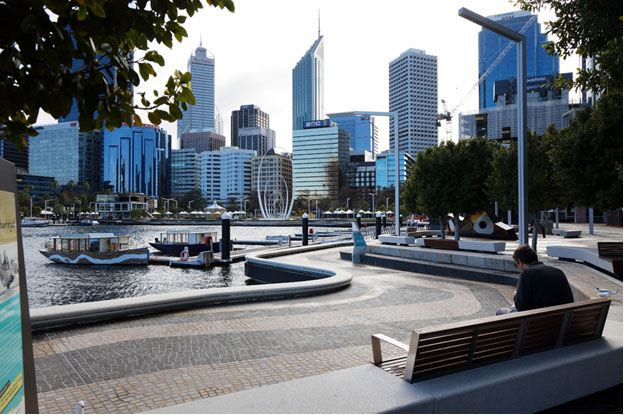
Program Status Update
People residing offshore are eligible to be considered for Western Australia (WA) State nomination. Invitations to apply for WA State nomination will be via the ranking system.
The Western Australian Skilled Migration Occupation List identifies the occupations in current demand in Western Australia. This List is important if you want to apply for Western Australia nomination for either a:
Please note that to be eligible for an invitation in the WA State Nominated Migration Program, you must meet both:
Before starting your application, you will need to check whether your occupation is available on either the WA Skilled migration occupation list (WASMOL) Schedule 1 or 2, or the Graduate occupation list. You can search for your occupation here. (The occupation list search bar is located under the heading ‘Eligible Occupations’.)
Features of the WA 2024-25 State Nominated Migration Program:
Before submitting an EOI for Western Australia, applicants should check that they meet all eligibility requirements.
For a further explanation, see the Frequently Asked Questions page on the Western Australia Government website.
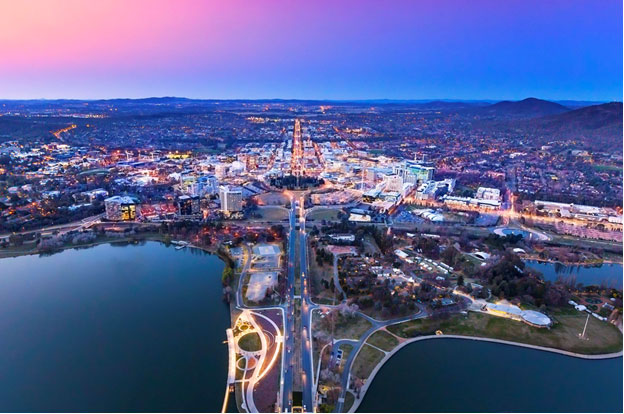
Program Status Update
The ACT Critical Skills List identifies the occupations in current demand in the ACT. This List is important if you want to apply for ACT nomination for either a:
The ACT Government will update this list every four months to make sure that the ACT Skilled Migration Program adapts and responds to the evolving critical skills needs of the ACT economy.
The Canberra Matrix is weighted to ensure that applicants who will make a positive economic contribution to the Territory and/or have demonstrated a genuine commitment to the ACT are more likely to be ranked and invited to apply for ACT nomination.
*ACT nomination does not guarantee a migration outcome. You must still meet the Department of Home Affairs criteria.
Every month, a certain number of nomination invitations are available (prorated on the annual allocation) to those working in the highest ranked Matrix in each occupation.
You can view the ACT’s most in-demand skills for skilled migration by consulting the ACT Critical Skills List.
Before submitting an EOI for The Australian Capital Territory, applicants should check that they meet all eligibility requirements.
Once you’ve submitted a valid Department of Home Affairs Skill Select EOI, follow the ACT Government Process to apply for ACT nomination.
For a further explanation, see the Resources page on the ACT Government website.
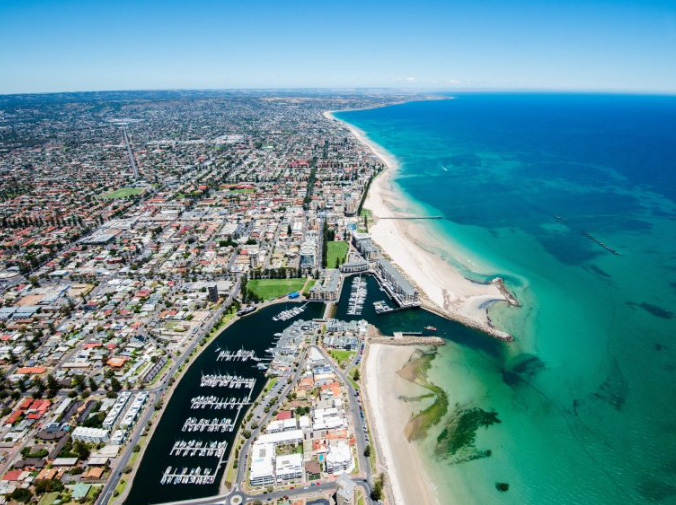
Program Status Update
Depending on your occupation and situation, there are two state nomination options available for skilled migrants through South Australia.
For South Australian state nomination, prospective applicants must meet the Department of Home Affairs requirements, state-specific occupation requirements and have skills in an occupation that is available on the South Australian Skilled Occupation List. Offshore applicants meeting the minimum published requirements can now lodge an Expression of Interest (EOI).
There is an enormous range of occupations on South Australia’s Skilled Migration Occupation List in a range of industries – search for your occupation here.
South Australia will select offshore applicants to apply for state nomination from those who have submitted an Expression of Interest (EOI) through SkillSelect. Offshore applicants will not need to lodge a Registration of Interest (ROI) for this year’s program. South Australia will be nominating offshore applicants from over 250 occupations on South Australia’s Skilled Migration Occupation List.
If you are currently residing offshore and seeking to move to South Australia, the first step is to create an Expression of Interest (EOI) in SkillSelect ensuring you select South Australia as your first preferred State or Territory.
The South Australian Government can then review your EOI for consideration under the Skilled Nominated (Permanent) visa (subclass 190) or Skilled Work Regional (Provisional) visa (Subclass 491).
For most occupations, applicants must have a minimum of three years of skilled employment in their nominated or related occupation within the last 5 years to secure an invitation to apply for SA nomination.
South Australia will be assessing candidates on merit by the following factors:
For occupations in the construction trades (as listed here) applicants must have a minimum of one year of skilled employment in their nominated or related occupation within the last 3 years.
Applicants in the construction trades will be assessed on merit by the following factors:
Before submitting an EOI for South Australia, applicants should check that they meet all eligibility requirements.
For a further explanation, see the Frequently Asked Questions page on the South Australia Government website.
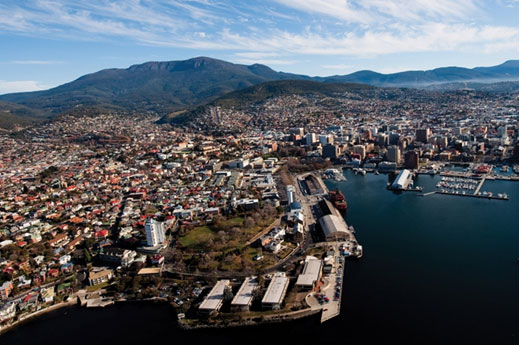
Program Status Update
Working in Tasmania
The two state nomination options available for skilled migrants through Tasmania are:
The Tasmanian State Nomination Skilled Migration Program supports Tasmanian businesses and increases the state’s working age population. It does this by attracting and retaining migrants with skills genuinely in need by employers, or with the capacity to settle in Tasmania through skilled employment in the long-term, and business activities that will increase employment opportunities.
Tasmania’s skilled migration program is for people wanting to move to the state who have skills that Tasmania need. Skilled migrants are attracted to Tasmania because of the state’s enviable lifestyle, career opportunities, affordable housing, reputable schools and a globally recognised university.
The Migration Tasmania Application Gateway is now available for registrations of interest (ROI) and applications for skilled visa nomination from Tasmania.
Anyone seeking Tasmanian nomination for a Subclass 190 Skilled Nominated Visa or Subclass 491 Skilled Work Regional Visa must first register in the Migration Tasmania Application Gateway .
Before submitting an ROI for Tasmania, applicants should check that they meet all eligibility requirements for either;
For a further explanation, see the Frequently Asked Questions page on the Tasmania Government website.
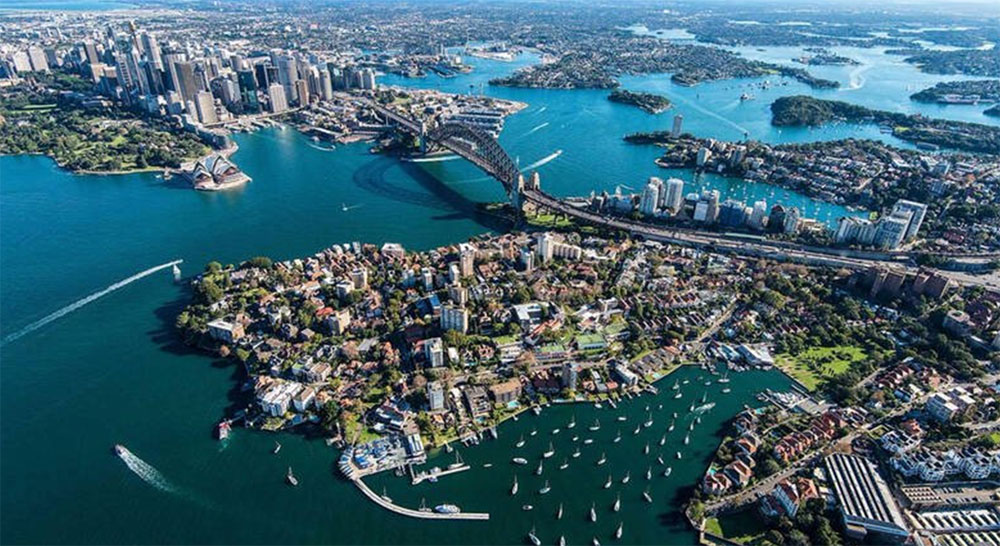
Program Status Update
The New South Wales government has invited applications from offshore migrants under the following nomination streams:
The NSW State Government announced that offshore applicants skilled in certain ANZSCO unit groups are eligible for NSW nomination.
*Please note: Invitation rounds occur frequently throughout the financial year with no set date.
NSW invites and nominates SkillSelect EOIs at the ANZSCO unit group level. To be eligible for NSW nomination (for either Subclass 190 or Subclass 491), your occupation must fall within an ANZSCO unit group identified on the NSW Skills List which reflects skills in high demand across the state, and be eligible for the visa.
Before submitting an EOI for New South Wales, applicants should check that they meet all eligibility requirements for either;
For a further explanation of how the skills list works, see the Common questions about skilled visas page on the NSW Government website.
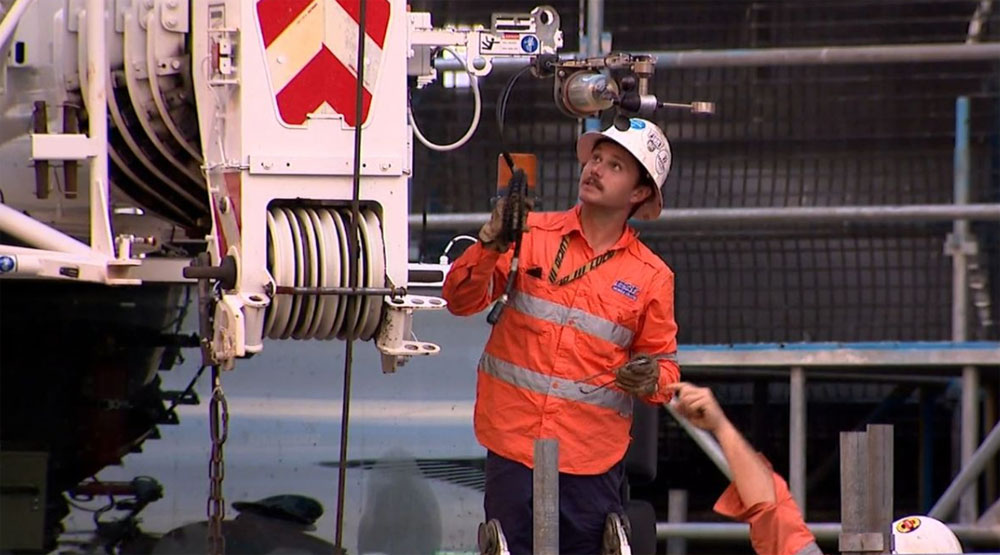
Queensland is in desperate need of 50,000 workers if it hopes to complete its housing projects, with pay packages to potentially reach into six figures.
The state will need extra construction workers within the next two years to build the housing and infrastructure needed ahead of 2032, according to a new report by Construction Skills Queensland.
“What we’re seeing is a shortfall of about 18,200 on average from now across the eight years, and that intensifies to about 50,000 shortfall in ’26, ’27,” Construction Skills Queensland director Kim Hetherington said.
Queensland is in desperate need of 50,000 workers if it hopes to complete its housing projects, with pay packages to potentially reach into the six figures.
The state government currently has $53 billion worth of construction activity in the pipeline with that figure set to jump to $77 billion in the next financial year.
One of those projects includes the aim to build 53,000 new homes by 2044.
“If we were trying to get everything done as we’ve actually got them on the books currently, we can’t get that done,” Hetherington said.
Construction Skills Queensland said the government needs to prioritise projects to make sure enough housing, hospitals, roads and schools are built in the next eight years.
The top five trades needed across Queensland are carpenters, painters, electricians, plasterers and concreters.
There’s also a huge shortage of earthmoving plant operators, structural steel workers and crane operators.
And pay packages can go into the six figures.
“The sky’s the limit if you want to go into construction management, you know, $300,000 and beyond, but certainly, the trades are being well paid in this environment,” Hetherington said.
The state government said it is working on incentives and policies to help ease the shortage.
The Aussie man said he was working 12-hour days, two weeks on and two weeks off, with the in-demand job.
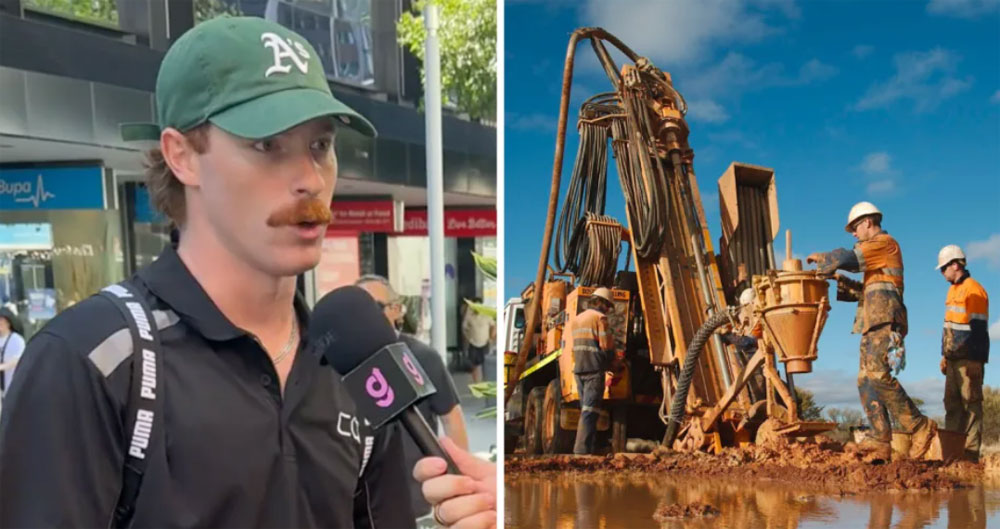
An Aussie FIFO (Fly-In Fly-Out) worker has shared how he is earning $100,000 a year for an entry-level job that is expected to boom this year. Aussies don’t need many tickets or qualifications to become a drillers offsider, but the mining job can offer a lucrative salary straight out of the gate.
The man was stopped in the street in the Brisbane CBD and shared how he was working as a drillers offsider for drilling company Central Queensland Exploration. He shared he had been working in the job for about two years, starting out in Western Australia and now working fly-in fly-out in Northern Queensland.
“I’m on a two and two roster so I work for two weeks straight, 12-hour days,” he said.
“I’ve done four and two, so four weeks on and two weeks off, that was hard. Two and two is definitely a lifestyle roster.”
FIFO recruitment expert Alana Mohi said she expected drillers offsiders would be an in-demand job this year. While she said it was a “bloody hard job” and required “a very intense level of physical fitness”, she recommended anyone keen to get into the mines to look into the job.
“It’s a hard job. But I’m telling you, that job walks into $120,000 to $150,000 a year, and is one of the best entry-level jobs,” she said.
There are a bunch of different roles available at rig sites, with the driller the most senior of them and responsible for operating the rig controls.
The drillers offsider is an entry-level position that employees new to the industry have to start in, according to the Australian Drilling Industry Association.
They are responsible for assisting the driller and tasks can include preparing the drill rods for adding into the hole, emptying and logging the sampling system used, and maintaining the mud system which keeps the drill hole stable.
The Brisbane FIFO worker said he was hoping to become a driller eventually.
“That’s the plan. I’m looking to get into a trainee [driller] role now, hopefully be like a D1 or D2, go up to ops manager,” he shared.
How do you become a drillers offsider?
To become a drillers offsider, Mohi said you would need to get a White Card, an unrestricted manual C-class license, a Heavy Rigid (HR) truck license and a national policy check.
That’s because one of the job requirements of a drillers offsider is to drive the trucks that are used to mobilise the equipment to and from the site.
People new to drilling will start off in supervised, entry-level roles to learn the processes involved, the Australian Drilling Industry Association noted. This is done on the job but there will usually also be some form of induction and basic training beforehand.
Offsiders will usually need to be in the job for a minimum of three months before starting a Certificate II in drilling, they can then move on to a Certificate III.
The Brisbane man shared he didn’t go to university or TAFE and got his job by applying for it.
The man said he would “absolutely” encourage females to get into the job.
“It’s definitely hard work but I’ve seen girls go harder than guys sometimes. It’s good to see when you see them onboarded and they just outperform everyone,” he said.
Central Queensland Exploration notes that drillers and offsiders need to have a valid Heavy Rigid Synchromesh or Road Ranger Truck Licence, while a Standard 11 mining induction course is highly regarded.
A Coal Board Medical is also highly regarded but not required for those new to the industry, plus successful applicants will need to pass a drug and alcohol screen and have a moderate level of physical fitness.
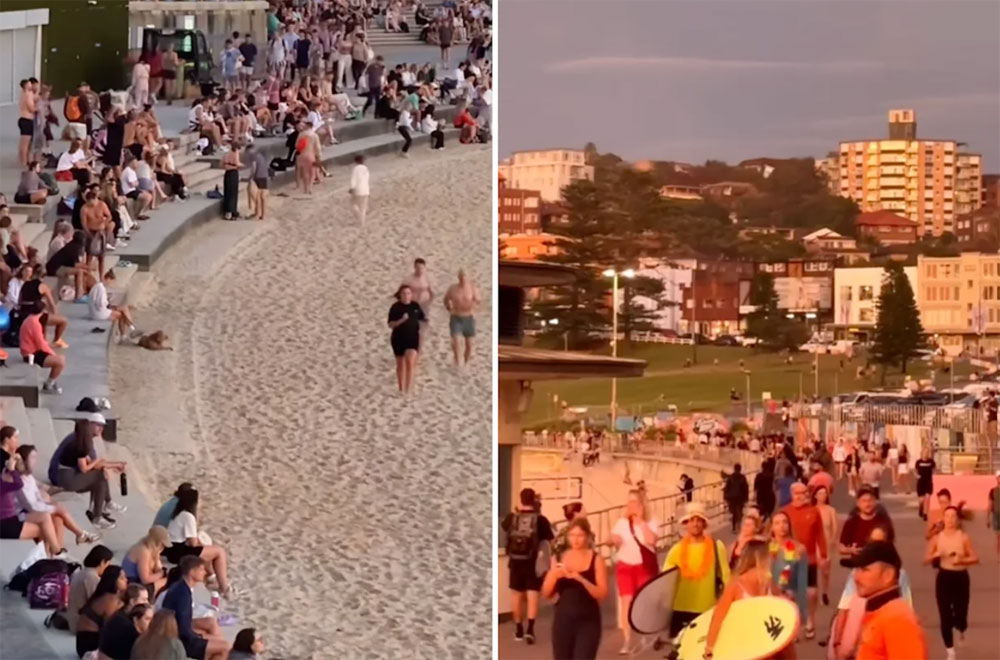
Whether you’re an early riser by nature or dragging yourself out of bed for the spectacle, there’s no denying the allure of watching the sun climb over the horizon.
In many parts of the country, this ritual has become an everyday phenomenon. Each morning, hundreds gather along Sydney’s shorelines, watching on in awe as the city transitions out of slumber and into a new day.
With crowds swelling into the thousands at some popular spots, some say the serenity of sunrise is often lost in a sea of joggers, influencers and coffee-clutching early birds.
Others on the other hand, see a cultural evolution in the making — a move away from Australia’s traditional, alcohol-fuelled social scene and toward a lifestyle centered on health, mindfulness, and connection with nature.
Lawyer April Rolfe believes the latter statement reflects reality. Dividing her time between Sydney and the Gold Coast, April’s an eastern suburbs local when she’s in town and has witnessed such scenes first hand. She said beaches like Bondi absolutely “buzz” before dawn — but not with “last night’s hangovers”, instead with people “choosing early mornings over late nights”.
“This generation is swapping hangovers for sunrises, nightclubs for run clubs and cold beers for cold plunges,” April said. “While the rest of the world hits snooze, the eastern suburbs are running up the coastal walk, diving into the ocean and sweating it out.”
Thousands flock to Sydney’s shorelines in early-morning ritual
April said the new social scene “isn’t about who stayed out the latest — but who was up first.”
Late last month, the topic was plunged into the spotlight when content creator Molly-Mae shared footage of enormous crowds on Bondi Beach, a video that attracted more than one million views worldwide. “No hangovers here, just run clubs, surfers, coffees and sunrises,” she captioned her post. “I swear Australia is a different planet.”
In the last week, another post taken at Coogee, just a few kilometres south, showed similar scenes. “All across the city you’ll see beaches packed in the mornings at sunrise as locals trade their nights out on the town for the peacefulness of a sunrise,” travel blogger Chester See wrote.
Each post, two in a deep well of similar videos, attracted an onslaught of comments. “This is a thousand times better way to live than drinking and wasting away your mornings in bed,” one person said. “The best way to start the day is having coffee while watching the sky,” said another.
Whether this new trend is a sign of a broader societal shift, or just another fleeting craze, one thing is certain — Sydney’s sunrises aren’t just beautiful, they’re also a major talking point.
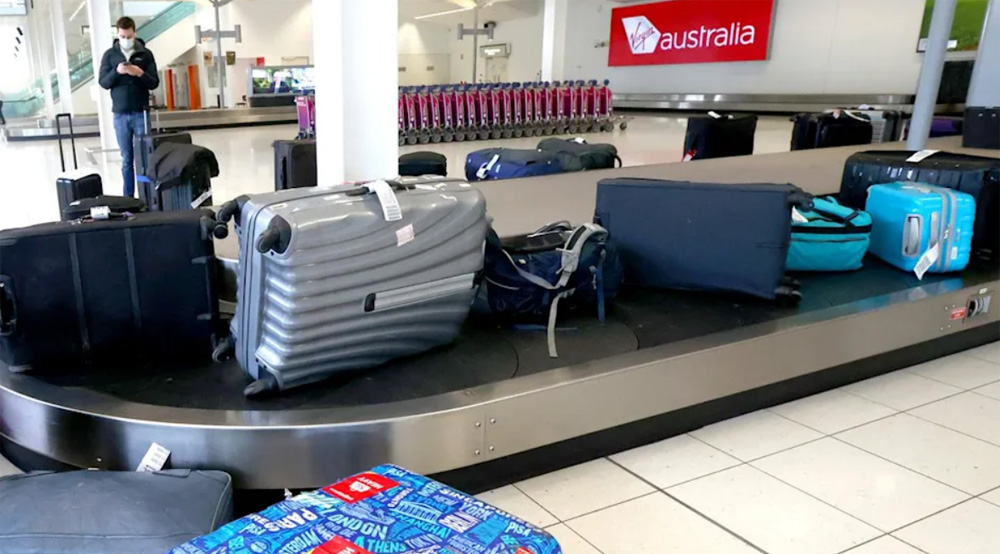
A record-breaking 197,000 international students arrived into Australia in one month.
New data released by the Australian Bureau of Statistics (ABS) on Friday revealed the number of international students arriving in the month of February jumped 7.3 per cent higher than the pre-pandemic record of 187,900 in 2019.
Traditionally, the number of international students coming into Australia spikes in February ahead of the semester 1 intake at Australian universities.
In the same month, 1.79 million people in total arrived in Australia.
Short term visitors, those planning to stay for less than a year, fell from 858,000 in 2024 to 788,000 in the same month.

With an ever-increasing demand for funds among students going abroad to pursue their higher education, the need for freelance jobs for students has increased exponentially. Freelance work that provides online jobs for students is preferred over the one that provides offline jobs. Many experienced professionals are also seeking freelance jobs to “work on their own terms” and get paid well in exchange for skills that they are good at.
Freelance jobs for students provide the opportunity to make some extra monthly income without having to compromise with your focus job/studies abroad. One can perform their freelance jobs in the meantime at the comfort of their home (online); which is why freelance jobs are of a great deal for students studying abroad. International students constantly require a great deal of money for their monthly expenditures and an extra income can be just helpful. Here we will explain what freelancing is and give the top 10 freelance work from home jobs for students.
What is Freelancing?
Freelancing is a kind of self-employment wherein you work without signing a legal bond/contract with a company. Freelancers get paid per hour or project depending on the criticality of both. The people/organisations hiring the freelancers are often referred to as “clients”. A freelancer may choose to work either for one or multiple clients at a time. The mode of payment is usually online by direct bank transfer or by UPI payments.
Freelancers, not permanent employees of the company, cannot leverage any employee-welfare schemes of the company. For all these aforementioned reasons, freelance jobs for students are often considered better than part-time jobs for getting some extra monthly pocket money. Freelancing for students can be done both online and offline. Hence, most students abroad prefer freelancing online in the comfort of their place and time.
How to Start Freelancing as an International Student?
Below are a few steps to help you get part time jobs (work from home) for students.
Top Skills Required for Freelancing as International Students
Freelancers do not mandatorily require any work experience to start freelancing. Having certain skills and experience relevant to the project/task renders a freelancer eligible for freelancing. Below are the top skills that can help one get an online freelancing job.
Top 10 Freelance Jobs Online for Students Abroad
Below are the top 10 freelance online jobs that students can do while studying abroad.



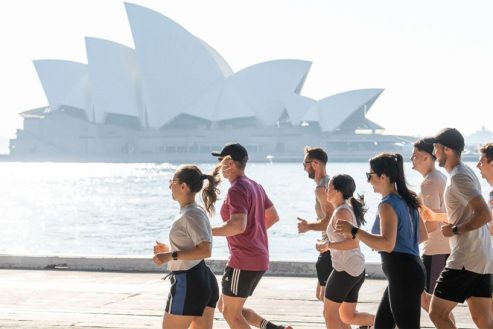

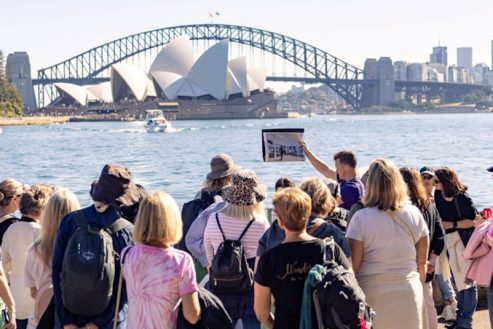

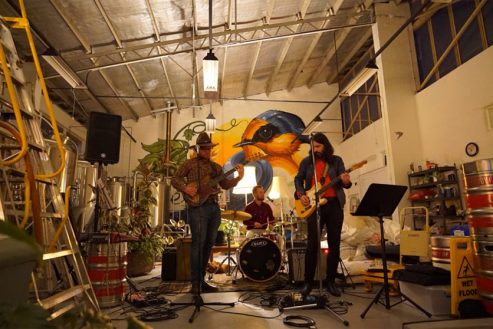
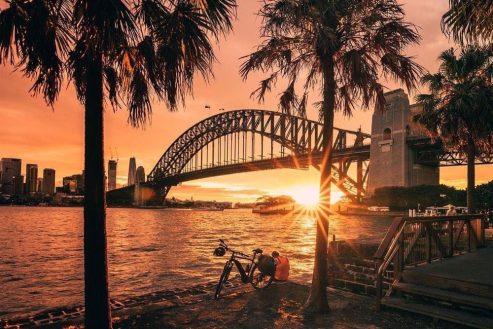
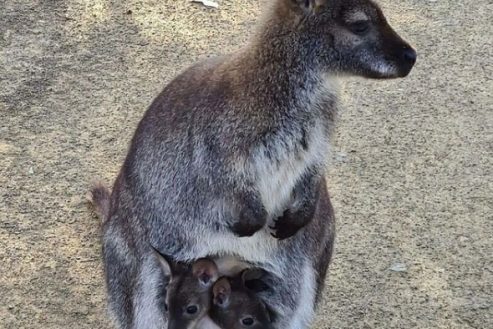


This Bulletin and its contents is for general information purposes only and should not be used as a substitute for consultation with professional advisors.
As legislation and travel requirements are constantly changing, we strongly recommend obtaining advice on your individual situation from a Registered Migration Agent. Please click here to book a consultation with one of our Registered Australian Migration Agents, located in Australia.






You can manage your membership and billing method by clicking here
Terms of Service
Privacy Policy
Copyright © 2025 Office of Immigration Australia, a private company registered in Australia. All Rights Reserved.